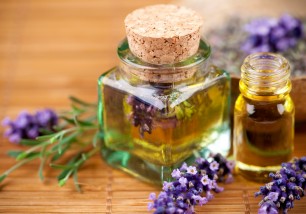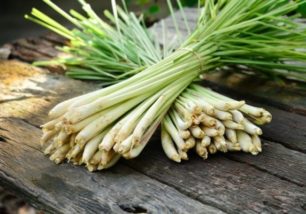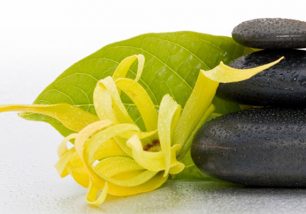ROSEMARY
BOTANICAL NAME:Rosmarinus officinalis L.
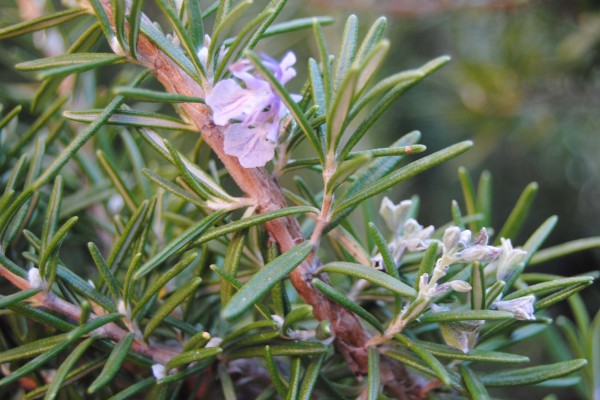
PLANT DATA
| Common Name: | Rosemary |
| Botanical Name: | Rosmarinus officinalis L. |
| Family: | Lamiaceae |
| Origin: | Southern Europe and northern Africa. Today it's diffused in many temperate climates. |
| Other names: | ES: Romero FR: Romarin DE: Rosmarin |
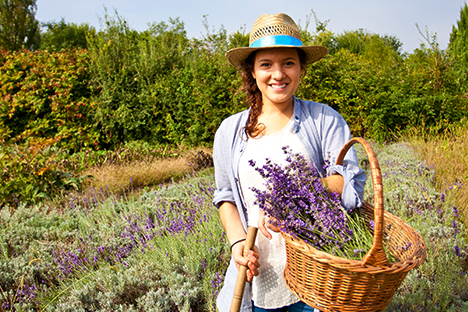

Rosemary is a perennial evergreen shrub with a very branched and woody stem. Its form can range from prostrate to upright and can be as tall as 3 meters. Rosemary leaves are short, opposite, without of petiole, with revolved margins that have numerous hairs and glands in the lower part. Rosemary’s flowers, gathered in little axillary inflorescences, are blueish-purple or rosy-white. The fruit is a tetrachene made up of four small dark-colored achenes.
History and Curiosity:
Rosemary’s name derives from the Latin name ros marinus, dew of the sea, because it grows in proximity to the sea. In ancient times, rosemary was often used as a substitute for incense because of its acute and penetrating perfume and the incense being very costly. Rosemary was considered sacred among many civilizations. Rosemary branches were burned in the temples of ancient Greece; fumigations of the medicinal plant were used in Medieval times to get rid of evil spirit and also used as protection against the plague and infectious diseases. Rosemary’s antiseptic power was used to marinate meat, with the purpose, not only to give it flavor, but to also preserve the meat from rotting. In the past, the French burned rosemary in the halls of hospitals because of its disinfecting properties. Rosemary is one of the principal components of the so-called “Water of the Queen of Hungary”, a distillate of rosemary, used in 1235 by a hermit on the paralyzed limbs of the Queen of Hungary. The use of this preparation led to the Queen’s healing and is still used today in popular medicine as a homeopathic method for skin disease and in feminine cosmetics, such as a stimulating cosmetic. In popular tradition, rosemary baths were recommended for infantile rickets.
HERBAL TEA CUT
The flowering tops are dried in a temperature of 30-40°C or in a well-ventilated and shaded area in order to keep the characteristics of color and smell unchanged.
ESSENTIAL OIL
It is obtained through steam distillation of the flowery aerial parts. Rosemary is a plant with a high content of essential oil with a yield in oil that ranges from 0,8% to about 2,6%.
TINCTURE
This technique extracts the active ingredient of rosemary through leaving fresh, flowered, foliate branches to macerate in a 65-proof hydro alcoholic solution.
Climate and soil:
A very rustic plant, adaptable to various types of soil and arid environments, fairly resistant to low temperatures, rosemary prefers loose and calcareous soils, and is particularly resistant to drought.
Planting and propagation:
The propagation of rosemary generally occurs by cuttings, sometimes also by seed although it is not recommended due to the low germination rate.
The cuttings are prepared by cutting sections, not longer than 15 cm, from the woody twigs. They are then placed root in the nursery, at the beginning of spring or in autumn, depending on the period of planting.
The rooting of rosemary occurs about a month later. To facilitate rooting it is advisable to remove all the leaves in the part of the cutting that is going to be covered by the soil.
In Mediterranean areas, with a mild winter climate, the cultivation of rosemary has a continuous growth.
Crop duration:
Multi-year culture that lasts up to 10 years.
Cultivation care:
Rescue irrigation may be necessary at the time of transplanting of the cuttings, and also during the Spring-Summer ,due to the warm climate typical of Mediterranean countries.
In the second year of the cultivation a pruning is recommended, to favor the formation of a good bush, with the emission of new jets from the base of the plant. In the following years dry branches will need to be removed.
The rosemary plant does not benefit significantly from the use of fertilizer, so it is unnecessary to carry top dressings.
Weeding is needed in the inter-row.
Harvesting:
Rosemary is often harvested spontaneous.
The flowering tops (leaves and flowers) are collected, preferably in early summer.
During the year, two cuts from the same rosemary plant can be made.
From each cut, the yield in fresh plant material is of about 10-15 t / ha, to be used for distillation.
The material that is not used for distillation is put to dry. The production in dried leaves is around 1-1.3 t / ha.
Parts of the plant used:
Leaves, flowers, young shoots.
Properties and uses:
Rosemary-flowering buds possess antispasmodic, choleretic and antioxidant properties that make the plant an effective remedy for treating digestive disorders.
Rosemary flowered buds also have a draining action and their use facilitates renal and intestinal elimination functions.
Rosemary preparations, in adequate doses, have the property of regulating the hepato-digestive function and also help to protect liver cells with an antioxidant mechanism; This therapeutic action is confirmed by studies on the plant's aqueous and ethanolic extracts.
Rosemary essential oil is used for its spasmolytic action on smooth muscles and venous and arterial walls, confirmed by in vitro studies and on animal guinea pigs.
Rosemary essence, it has expectorant and fluidifying properties of bronchial secretions, both orally and by inhalation. Another intrinsic feature is the antiseptic action.
It is therefore indicated in bronchopulmonary diseases and as a circulatory and muscular tonic.
The most commonly marketed and known rosemary essential oil is the type 1-8 cineoli.
Glycerol macerate or rosemary germ extract has cholagogue, choleretic and hepatoprotective properties. It also helps prevent the formation of gallstones.
Another important property is the repairing effect on the intestinal mucosa, which facilitates the absorption of calcium and therefore represents an effective remedy against osteoporosis.
The use of rosemary buds is recommended in andropause and in menopause, as it shows tonic properties and seems to be able to improve mnemonic processes and stimulate brain activity (works on the adrenal cortex).
The young shoots also have a protective effect against oxidative stress caused by free radicals, both on the vascular and nervous systems.
Rosemary is used as a starting material to obtain natural.
